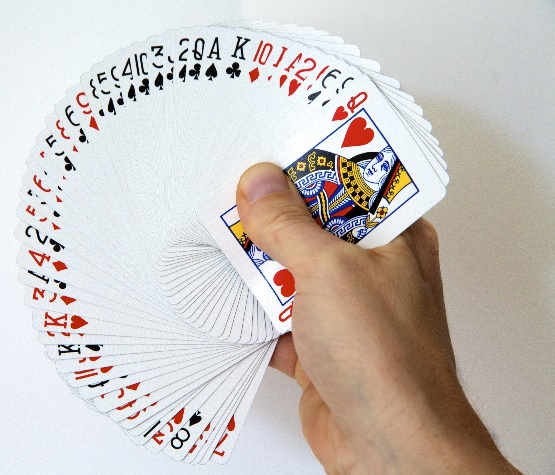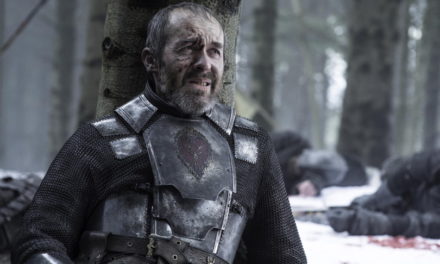I will start this article by saying that I am not a forward thinker when it comes to theory crafting. Merely reading the post by Sparrowhawk about the different card game concepts and theory crafting on the Cardgamedb forums gave me a small headache. I never competitively played Magic (Just played for fun as a child) so tempo, trajectory, redundancy and opportunity cost were never things that entered my mind back then, and even now I only have a fledgling understanding of the concepts, relative to some.
So, if you came here expecting to read an in depth statistical analysis of card advantage in a theoretical sense, I’m going to disappoint you. I can do a lot of things, but sounding all smartlike ain’t one of them.
However, in his article/post thing, Sparrowhawk did mention card advantage as a potential topic for discussion and this got me thinking about it a little. What is the difference between card advantage and card draw? And is there a direct correlation between either of those and the strength of a faction?
What is Card Advantage?
Card advantage, or CA for short, is a term used in several card games and it typically means approximately the same thing. Having card advantage means you have more cards than your opponent at your disposal, or under your control, whether on the board or in your hand. It’s pretty straight forward on the surface. If you draw cards, you gain advantage. If your opponent discards cards, you gain advantage.
However, in my casual conversations with members of this community, it seems that the term “card advantage” is commonly whittled down to one thing: card draw. The two terms have become almost synonymous. When people say “card advantage,” chances are they mean “card draw.”
The faction with more effects that draw or gain cards from their deck is often considered the faction with the best card advantage. For this reason, Baratheon, who have the Red Keep, Tobho Mott’s Armory, and Moon Boy and Tyrell, who have the Mander, Ser Hobber Redwyne, Olenna’s Cunning and the Pleasure Barge have typically been coined the factions with the best card advantage, while Targaryen, who only has Daenerys’ Insight, and Martell, who only have Doran’s Insight and the Greenblood Trader have typically been considered the factions with the worst card advantage.
But is it that simple? Can we really reduce a term as broad as “card advantage” down to identifying the faction with the most cards with the words “draw” or “insight” in the text box? I mean, there is an entire Wikipedia entry about all the different kinds of card advantage, so obviously the answer is no. Plus, I mean…I wrote this article. And you’re reading this article. So there must be something to talk about, right?
How Does Card Draw Relate to Faction Strength?
The people who liken card advantage to card draw often consider the faction with the most card draw to be among the best factions in the game. I’ve had people tell me a deck is not viable purely because of the main faction’s lack of card draw, citing the age old precedent of “Draw = win” from 1.0.
Just a quick aside: In 1.0, there was no such thing as reserve. So your hand size could be as big as you wanted. That meant that card draw was extremely powerful because there was no limit to how many cards you could hold in your hand. Now, with reserve, you can have a lot of card draw, but it isn’t as impactful if you have to discard cards in order to meet your reserve at the end of each round. Reserve was a nice addition to the game and, in my opinion, changed the phrase to “Card advantage = win.”
Anyway, back on topic. Is the amount of card draw a fair way to grade the factions? Card advantage, after all, is not just drawing cards and discarding cards. It also has to do with the cards in play, as well as the cost required to play those cards. A card in your hand is meaningless if you can’t afford to play it.
Due to this belief that draw = win, it is not uncommon for a good card that does not generate card advantage to be thrown to the wayside simply because it does not generate card advantage. And cards that actually cost you card advantage? Forget about it. People fucking hate those cards.
Look at Hear Me Roar, the Lannister event that allows you to play a character from your hand, which is then discarded at the end of the phase. Hear Me Roar was rated one of Lannister’s worst cards in the core set (and there weren’t many) and all of the chapter packs to this point , citing it as a card disadvantage card, which costs 1 gold and 2 cards (the card itself, as well as the character you’re bringing in from hand) for 1 phase of use out of that character. That is, until I Never Bet Against My Family was released in The King’s Peace. That card was hit even harder, as it was not only a card disadvantage, but also a RANDOM card disadvantage. What could be worse than a card disadvantage card that may not even get you anything at all?
Now those two cards define a deck type that has been extremely successful in the current meta; the Jumping Lions deck usually built out of Lannister Lords of the Crossing.
In my opinion, the faction with the best card advantage is not Baratheon, nor is it Tyrell. Nor is it Night’s Watch, for those of you expecting me to throw that out there.
The faction with the strongest card advantage in this game is either Targaryen or Martell, depending on the match up. And I’ll explain why. And the best part is, it involves math! 😀
Wait, we have to do Math?
Don’t worry! Mathematically, card advantage is simple as hell. A card that draws you 3 cards, like the Pleasure Barge of Tyrell, would give a card advantage of +2. +3 for the cards you draw, -1 for the Pleasure Barge leaving your hand (essentially becoming useless after the effect resolves) in order to initiate the effect. Similarly, a military challenge win with a claim of 1 is considered a card advantage of +1, since you are forcing your opponent to kill a character or discard a duplicate of a character that they have on the board. This is the accepted way of calculating card advantage in many card games.
Using this logic, Ice, the Stark attachment that allows you to discard it to kill any 1 character after winning a military challenge will come out to a net card advantage of 0. -1 for having to discard the card to use it and +1 for having killed a character.
So is Ice bad? The consensus in the community is a resounding “No, you idiot!” paired with a dirty look and a dismissive murmur under their breath (literal response you get if you ask someone if Ice is a bad card). Ice is considered a very strong card which, if we apply the rule of “card advantage defines the value of a card”, makes no sense.
The reason for this is that the mathematical approach to CA does not consider some of the most important parts of any card advantage play: the cost of the card lost/gained and the targeted card lost/gained.
The Cost of the Card
Generally speaking, trading a card for a card is considered an even play. Using Winter is Coming to kill 1 additional character due to military claim is technically an even play because you used Winter is coming (-1 CA) to kill 1 more character (+1 CA) for a sum of 0. However, if the character that your opponent had to kill because of this increase in claim was worth 4 gold, and you spent just 1 gold on Winter is Coming, you generated an alternative advantage that goes hand in hand with CA: economic advantage.
Similarly, if you used a card, such as Put to the Sword, that killed a 4 cost character in play, that card advantage is stronger than if you had won an intrigue challenge and discarded that same 4 cost character from their hand. In the first case, you cost your opponent a 4 cost character as well as the 4 gold they spent on the character, and in the other, you simply cost them the character with no economic loss.
The reason Ghaston Grey is considered such a strong card is because, while it technically is a card disadvantage card of -1 (moving a card from play to your opponent’s hand does not remove the card from their control, after all), in many circumstances, it offers much more than that. By using Ghaston Grey on a 7 cost character, you are trading a 2 gold location to remove a 7 gold character from play, generating a net gain of 5 gold. There are not many cards that can generate a bigger economic advantage than that. The impact of this card is so great that your opponent may not even be willing to attack with their best character, rendering them flaccid; castrated; A shell of their former self. By returning a character to your opponent’s hand, you are forcing them to either replay that character the following turn, or play different cards from their hand, which is the equivalent of if that character were removed from play for at least 1 turn.
Similarly, the 3 cost Ice can kill a 7 cost character, resulting in an economic advantage of 4 gold. Bonus points if the character you killed/sent back to hand had any power from renown on them, as this creates a third advantage.
The Impact of the Card Gained/Lost
When it comes to card advantage, there are three ways a card is gained or lost: by the opponent, at random and by the player. In general, a card advantage chosen by your opponent is worse than a random choice which is worse than one chosen by the player.
An example of an opponent chosen card advantage (CA) would be when your opponent has to discard a card to get down to their reserve. In this case, they are choosing the worst card in their hand to discard, or the card that they are least likely to play in that particular game (such as a dupe of a dead character).
An example of a random CA play would be an intrigue claim. In this case, you have a chance of discarding the best card in their hand, but you have an equal chance of discarding the worst card in their hand.
An example of a player chosen CA would be Seen in Flames. In this case, you get to look at your opponent’s hand and discard the card that you do not want to see them play. This is obviously the best version of discarding a card from your opponent’s hand.
Each play forces your opponent to discard a card, but it is obvious that there is a large gap in the impact of that discard among the three options. How large that gap is depends on the situation, but generally speaking, a player chosen card advantage is vastly superior to a random or opponent chosen card advantage, even though Seen in Flames is technically a net CA of 0.
Support of the people is a CA play of 0, but you get to search your entire deck for the location that you need in that particular situation and you get to put it directly into play, rather than in your hand. Not only is that an economic advantage of up to 2 gold (1 cost for the event, up to 3 gold returned for the location being in play), but it is a card of your choosing. Would you rather be allowed to draw 5 cards, hoping to find the card you need, or go find the 1 card you need?
Finally, I’d be remiss to not mention the impact of saves on the importance of card advantage. A Put to the Sword or Ice or an increase in military claim can be extremely impactful to the board state, resulting in a large card advantage. But this can instantly be cancelled by saves, primarily via duplicates, bodyguards and cards such as Risen from the Sea and Maester Aemon. For this reason, a card that specifies that a save cannot be used would become more valuable than the same effect that allows for saves. This brings me back to Ghaston Grey, which has the explicit text “Cannot be saved.” This means that your opponent can have a triple duped character with a bodyguard and some sort of save in their hand. However, if they are successfully targeted by Ghaston Grey, all those dupes and bodyguards do not matter. That character is going back to their hand, and the dupes will be discarded.
I mentioned Targaryen in my opening opinion, so I better talk about them right? Well, this rule about saves applies to them as well. Dracarys! is an event that, by virtue of the game mechanics at play, cannot be stopped with a save. If Dracarys! kills a character, the dupes cannot be used because, even when the dupe is used, the character would still be at 0 strength, meaning they are still dead, no matter how many saves you use. The notable exception to this would be a card such as Risen from the Sea, which not only saves a character, but also gives them +1 strength. If that +1 strength raises the character’s post-Dracarys! strength above 0, then it does save them, for the time being. But even still, Dracarys is a 1 gold event that can potentially remove a character, as well as all their dupes from the board. The CA and value there is tremendous.
Card draw is an outstanding version of card advantage. Factions that have a lot of it definitely have very good standing in the game right now, for the most part. However, card draw can be obtained via neutral cards such as Counting Coppers and Littlefinger. There are rarer, more powerful kinds of card advantage, such as Ghaston Grey and Dracarys! that are commonly dismissed during the discussion on card advantage, despite their strength at improving your odds of winning the game. And for those reasons, I believe that, despite their mediocre card draw (for the time being), Targaryen and Martell have some of the best CA cards in the game.
Thank you for taking the time to read this article. Am I completely wrong? Did I stray too far from the concept of Card Advantage? Let me know in the comments! We will continue to churn out articles, videos, podcasts and blogs about A Game of Thrones LCG 2.0 Edition, so if you have any suggestions or comments on how to improve the site, content or have a topic you’d like to hear about, feel free to comment below, or email us.





